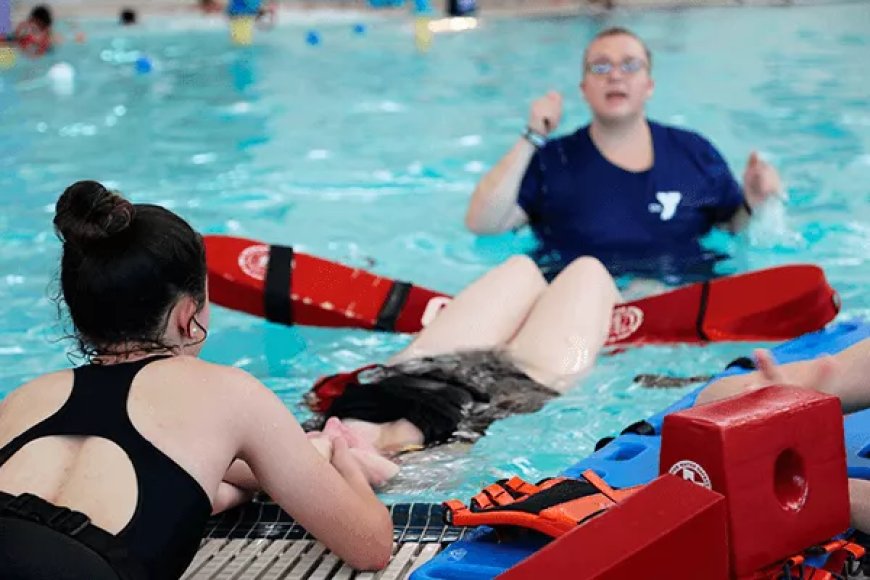More Than Just a Watchtower: The Intense Journey to Becoming a Lifeguard
Lifeguarding is typically split into two major categories: pool/lake lifeguards and beachfront lifeguards.

By Harlan Elio | Inspired by Damon C. Williams original reporting
The image of a lifeguardsun-kissed, vigilant, and blowing a whistle from atop a high chairis familiar to many. Popular culture has long romanticized lifeguarding through shows like Baywatch, making it seem like a relaxed summer gig. But behind the red trunks and mirrored sunglasses lies a serious and strenuous certification process. Becoming a lifeguard is more than just scanning a pool or beach; its a commitment to rigorous physical training, life-saving preparedness, and public safety.
The Two Branches of Lifeguarding: Pool vs. Beach
Lifeguarding is typically split into two major categories: pool/lake lifeguards and beachfront lifeguards. While both roles are centered on swimmer safety, their working conditionsand required skill setsdiffer greatly.
Pool and lake lifeguards operate in controlled environments. They watch over smaller bodies of water, often surrounded by safety signage and supervised entry. In contrast, beach lifeguards face nature in its rawest formrip currents, crashing waves, and miles of shoreline. Each environment demands tailored training, but both require unwavering focus and physical endurance.
Poolside Lifeguards: Strength in Still Waters
Though pools may seem calmer than the surf, poolside lifeguards are far from passive observers. Their training includes a minimum 300-yard swim using freestyle, breaststroke, and either sidestroke or butterfly. This ensures they can reach any part of the pool swiftly.
One particularly challenging requirement is the brick test. Lifeguard candidates must swim 20 yards, dive to retrieve a 10-pound brick from a depth of 7-10 feet, and return while holding the brick above wateran exhausting feat that mimics rescuing a struggling swimmer. First aid and CPR certifications are essential as well, preparing them to handle everything from nosebleeds to cardiac arrests.
Beachfront Lifeguards: Masters of the Ocean
Beach lifeguards require every skill a pool lifeguard hasand then some. Their training emphasizes open water swimming, with a typical requirement being a 500-meter swim in under 10 minutes. They are also trained in ocean dynamics, such as identifying riptides, managing rescues in shifting currents, and dealing with marine life.
Additionally, beach lifeguards are trained for more traumatic injuries, such as broken limbs from surfboards or deep lacerations from coral. Their first-aid training includes spinal injury management and mass casualty response. Most beach lifeguards work in tandem, often perched in towers spaced across the shoreline with ATVs, radios, and rescue boards at the ready.
American Red Cross & American Lifeguard Association Certification: The Gold Standard
Aspiring lifeguards in the U.S. typically undergo training certified by the American Red Cross & American Lifeguard Association, one of the nations most respected authorities in emergency training. Their certification path includes five key modules:
-
Aquatic Attraction Lifeguarding For shallow water areas (3 feet or less).
-
Lifeguarding with Deep Water Skills For pools exceeding 7 feet in depth.
-
Shallow Water Lifeguarding For environments between 4-7 feet deep.
-
Waterfront Skills Additional open water competencies.
-
Waterpark Skills Handling slides, wave pools, and lazy rivers.
This certification usually requires over 25 hours of training and must be renewed every two years.
Real-Life Readiness: Simulation and Drills
One critical element that separates a great lifeguard from a good one is preparedness through simulation. Certification programs often include mock drills where trainees must respond to staged emergencies. These range from unconscious swimmers to spinal cord injuries.
In beach settings, drills may involve full-on rescues with flotation buoys, radios, and spinal boards. The goal is to develop muscle memoryso that in the heat of the moment, response is automatic and precise.
Soft Skills Are Hard Earned
Beyond the physical, lifeguards must excel at communication, situational awareness, and judgment. Whether its warning a family about swimming too far or calming a panicked child, these interpersonal skills are critical.
They must also endure long hours in the sun, maintain mental focus, and deal with the emotional toll of responding to emergencies. Often, their duties expand into rule enforcement, crowd control, and even handling medical incidents unrelated to swimming.
The Roadblocks: Why the Certification Process Is So Intense
Lifeguarding may seem like an ideal summer job, but the attrition rate is high. Many candidates dont pass the physical entrance tests. Others struggle with the emotional and mental demands.
This is by design. Lifeguards are entrusted with lives. The high barrier to entry ensures that only the most capable make the cutthose who can swim against a riptide, make a split-second life-or-death decision, or perform CPR on a toddler.
New Frontiers: Technology and Lifeguarding
In recent years, technology has started playing a supporting role in lifeguarding. Some pools and beaches now use drone surveillance, sonar detection, and AI-driven motion sensors to spot swimmers in distress.
Still, nothing replaces the trained human eye. Technology may assist, but it cannot replace the instinct, empathy, and immediate physical response of a skilled lifeguard.
Not Just a JobA Responsibility
Lifeguards are more than just teens in swimwearthey are first responders, emergency medical aides, and protectors of public safety. Whether guarding a busy pool or a roaring beach, lifeguards are often the thin red line between a fun summer day and tragedy.
Becoming one is no easy feat, and it shouldnt be. The next time you see a lifeguard on duty, know that you're in the care of someone who has trained, tested, and earned their right to be there.
About the Author:
Harlan Elio is a writer and safety advocate passionate about highlighting the rigorous and often-overlooked roles of community protectors. With a focus on public service, youth training, and emergency preparedness, Harlan Elio writes to inform and inspire.























